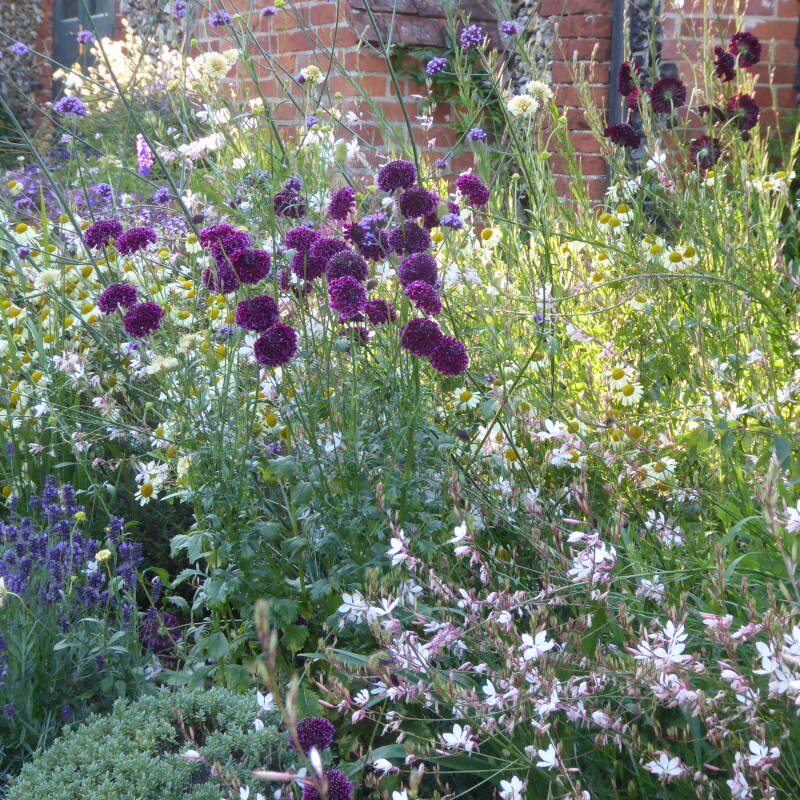Are you feeling calmer already? Photos of Japanese dry landscape gardens near Zen temples always lower my blood pressure, with their peaceful arrangements of rocks, gravel, moss, and the occasional well-trained evergreen tree or shrub.
Imagine how nice it would be to have a karesansui of your own. For inspiration and instruction, we turn to Sakuteiki, the 11th-century Japanese garden design manual that describes how to create the harmonious, controlled landscape of a dry rock garden. Here are 1o ideas to steal (with some help from the Dictionary of Japanese Architectural and Art Historical Terminology):
Karetaki: Dry Waterfalls

The only thing missing is the water. To design a karetaki, arrange stones, sand, and gravel to create a symbolic waterfall.
“Typically the waterfall is represented by standing bluestone lengthwise to symbolize the cascade,” notes the Dictionary of Japanese Architectural and Art Historical Terminology.
Karenagare: Raked Sand

At the base of a dry waterfall, place a layer of “gravel or white sand to make a dry stream,” advises the Dictionary of Japanese Architectural and Art Historical Terminology.
To make the job easier, use the right tool; see 10 Easy Pieces: Gravel and Sand Rakes.
Karesansui: Rock Sculptures

In Zen gardens, the shape and placement of rocks is a key design component. Depending on size and silhouette, a rock can symbolize a mountain, an island, or a welcome (if placed at the entrance to a garden).
Rocks also can evoke five natural elements, including:
- Metal: Reisho rocks are low, solid rocks that convey a sense of firmness.
- Wood: Tall taido rocks often are arranged in groups with reisho rocks.
- Water: Flat, low shintai rocks symbolize flowing water.
- Fire: Rocks with shapes that mimic flames, called shigyo, are meant to represent fire.
- Earth: Stones turned onto their sides, as if they are lying down, are kikyaku rocks that symbolize the earth.
Kogetsudai: Gravel Mountains

Gravel shaped into conical forms can represent mountains, in the style of a giant cone of sand at Ginkaku-ji Temple that represents Mt. Fuji (and spawned centuries of imitators).
Moss

Low-growing mounds of shade-loving moss at the edge or surrounded by a sea of raked gravel create a peaceful green contrast to the other natural elements in Zen garden. Mosses fall into two general categories: Acrocarps (which grow in upright mounds) or Pleurocarps (which creep along the ground).
Evergreens

Trees and shrubs, often placed singly as or along a perimeter of a Zen garden, often are evergreen to create a year-round complement to the other elements.
Azaleas, rhododendrons, Japanese maple trees, conifers (such as pine trees), and yew are good choices for a Zen garden.
Pick a Perspective

Design your Zen garden to viewed from a single perspective. Sit in a chair and survey the plan—is it pleasing at eye level?
Perimeter of Plants

At the edge of a Zen garden, evergreen conifers are often trained as topiaries. For more, see Topiary: Cloud Pruning as Arboreal Art and Pine Trees 101: A Field Guide to Planting, Care & Design.
Enclose the Garden

To reinforce the peace and sense of a Zen garden as an orderly, controlled universe an enclosure—typically a fence with a gate—separates it from the outside world. For fencing choices, see 10 Easy Pieces: Japanese-Style Fences and Screens.
Seek Guidance

- Azaleas 101: A Field Guide to Planting, Care & Design on Gardenista.
- Beyond Zen: see more styles of Japanese gardens in 10 Garden Ideas to Steal from Japan.
- Japanese Maple Trees 101: A Field Guide to Planting, Care & Design.
- Designer Visit: A Garden Inspired by Japan, in Westchester County, New York.









Have a Question or Comment About This Post?
Join the conversation